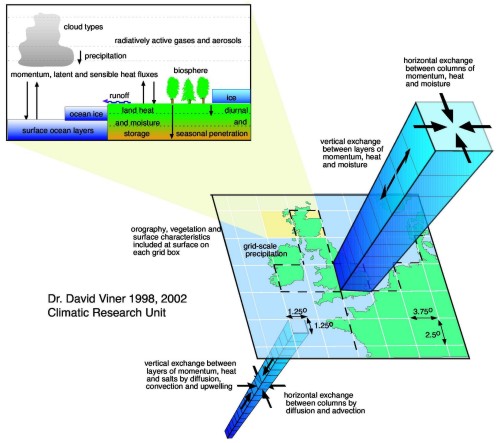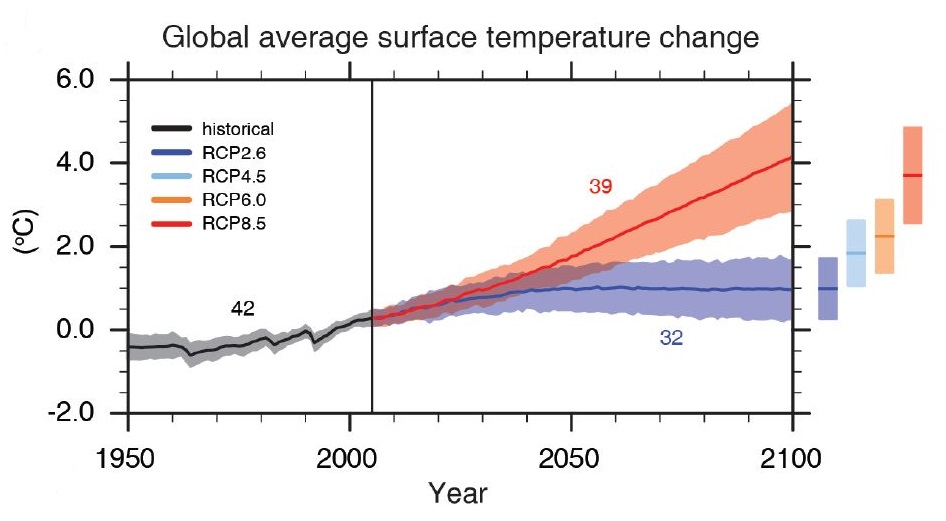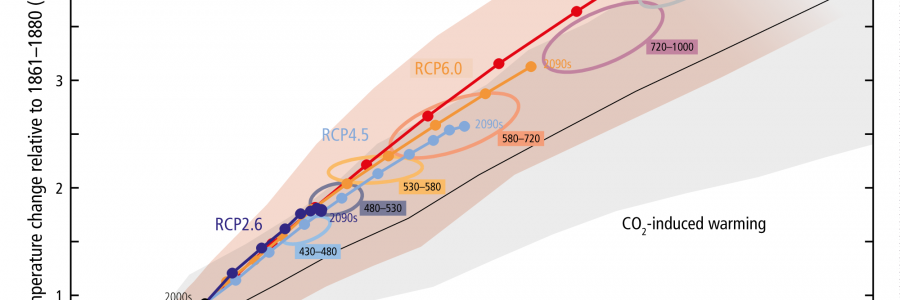The Climate Change scenarios come from simulations with Global Climate Models (GCMs).

Current GCMs simulate mass and energy exchanges between ocean, land, and the atmosphere.
Simulations come to each 250-600 km2, according to the climate model spatial resolution. The GCMs usually consider 10-15 vertical layers.
Relevant centres in the USA, UK, Germany, Russia, France, Canada, China, Australia and other countries developed climate models in the last 20 years. The last report (AR6, 2021) of IPCC Working Group 1 considered the RCP scenarios, an international multi-model collaboration.
Besides the climate models, Climate Change scenarios rely on “Emission Scenarios”.

To model and predict future climate, it is necessary to make assumptions about the economic, social and physical changes to our environment that will influence climate change. The emission scenarios estimate the amount of CO2 and other greenhouse gases launched to the atmosphere at each of the GCM cells.
In their former AR4 report, IPCC considered SRES scenarios, based on a study which they coordinated. Instead, the 2013 and 2021 IPCC Reports rely on the results of an international committee, which developed new emission scenarios: RCPs. The Representative Concentration Pathways (RCPs) are a method for capturing those assumptions within a set of scenarios. The conditions of each scenario are used in the process of modelling possible future climate evolution.
These scenarios estimate greenhouse gas emissions during this century. The RCP scenarios consider current and future economical and social conditions, based on the foreseen population and economy growth.
RCPs specify concentrations of greenhouse gases that will result in total radiative forcing increasing by a target amount by 2100, relative to pre-industrial levels. Total radiative forcing is the difference between the incoming and outgoing radiation at the top of the atmosphere. Radiative forcing targets for 2100 have been set at 2.6, 4.5, 6.0 and 8.5 watts per square metre (W m-2) to span a wide range of plausible future emissions scenarios and these targets are incorporated into the names of the RCPs; RCP2.6, RCP4.5, RCP6.0 and RCP8.5. Each pathway results in a different range of global mean temperature increases over the 21st century.

The AR6 models mimic the long term trends, including the global warming after middle XX century and the cooling after volcanic eruptions.
Besides, the GCMs have shown man’s influence in global warming. Simulations and Observations do not match, unless man’s activity is considered besides natural forcing.
Usually, GCM simulation outputs are in higher scales than the needs of specific applications. Hence, GCM results must be downscaled.
There are several statistically and physically-based downscaling techniques which reduce GCMs outputs to scales of 50 km2 or even lower.
Most Climate-Change impact assessments rely on such downscaled data.

